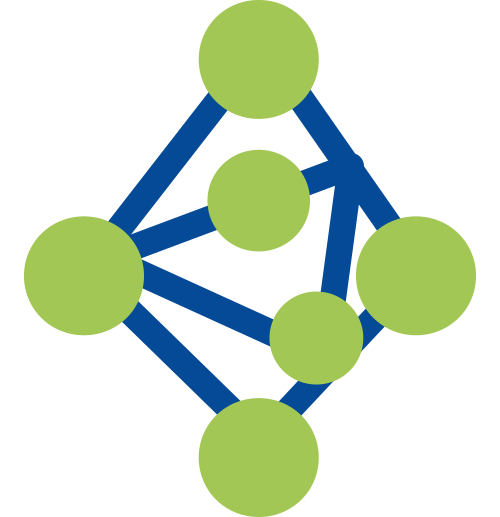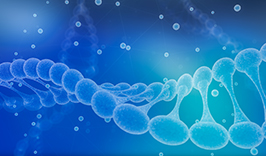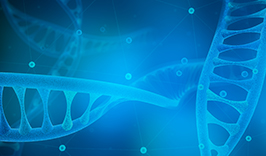- Good performance in capture

Figure 1. The capturing performance of QuarXeq HRD Probes
Note: Input 100ng of standard (NA12878) was used for ultrasonic DNA library preparation (QuarPrep DNA Library Kit, Dynegene, NL1001). 750 ng of prepared library and QuarXeq HRD Probes were used for routine hybridization capture (QuarHyb One Reagent Kit, Dynegene, NC1003),The test was repeated three times, and sequencing was performed on illumina platform, The data volumn used for analysis was 6 G.
- The ratio of HRR to HRD sequencing depth under differential capture is consistent with expectation

Figure 2. The sequencing depth under differential capture using QuarXeq HRD Probes
Note: Input 100 ng of standard (NA12878) was used for ultrasonic DNA library preparation (QuarPrep DNA Library Kit, Dynegene, NL1001). 750 ng of prepared library and QuarXeq HRD Probes were used for routine hybridization capture (QuarHyb One Reagent Kit, Dynegene, NC1003),The test was repeated three times, and sequencing was performed on illumina platform. The results showed that: The ratio of HRRto HRD sequencing_depth was 5:1,which was consistent with expectation.

Figure 3. The comparison of HRD BRCA2 sequencing depth with Chr 13 under differential capture using QuarXeq HRD Probes
The sequencing depth of HRD BRCA2 and Chr 13 were analyzed ,and the result showed that the ratio of the two vales was 5:1, which was also consistent with expectation.
- Uniform coverage of SNP sites

Figure 4. The coverage of SNP Marker chromosome
Note: in this figure, the gray areas are highly repetitive areas on the reference genome, the scattered blue dots are SNP Marker MAF repeat elements.QuarXeq HRD Probes中SNPsThe SNP sites are uniformly distributed in the QuarXeq HRD Probes, to cover as many of heterozygous sites as possible, and ensure that LOH, LST and TAI that meet the requirements can be detected.
 NGSHybridization Capture DNA Probe Hybridization Capture RNA Probe QuarXeq Human All Exon Probes 3.0 HRD panel Library Preparation DNA Library Preparation Kit Fragmentation Reagent RNA Library Preparation Kit mRNA Capture Kit rRNA Depletion Kit QuarPro Superfast T4 DNA Ligase Hybridization Capture QuarHyb DNA Plus 2 Reagent Kit QuarHyb DNA Reagent Kit Plus Hybridization and Cleaning Solution System QuarHyb Super Reagent Kit Pro Dynegene Adapter Family Dynegene Blocker Family Multiplex PCR QuarMultiple BRCA Amplicon QuarMultiple PCR Capture Kit 2.0 PathoSeq 450 Pathogen Library Corollary Reagent Streptavidin magnetic beads Equipment and Software The iQuars50 NGS Prep System
NGSHybridization Capture DNA Probe Hybridization Capture RNA Probe QuarXeq Human All Exon Probes 3.0 HRD panel Library Preparation DNA Library Preparation Kit Fragmentation Reagent RNA Library Preparation Kit mRNA Capture Kit rRNA Depletion Kit QuarPro Superfast T4 DNA Ligase Hybridization Capture QuarHyb DNA Plus 2 Reagent Kit QuarHyb DNA Reagent Kit Plus Hybridization and Cleaning Solution System QuarHyb Super Reagent Kit Pro Dynegene Adapter Family Dynegene Blocker Family Multiplex PCR QuarMultiple BRCA Amplicon QuarMultiple PCR Capture Kit 2.0 PathoSeq 450 Pathogen Library Corollary Reagent Streptavidin magnetic beads Equipment and Software The iQuars50 NGS Prep System Primers and Probes
Primers and Probes RNA SynthesissgRNA miRNA siRNA
RNA SynthesissgRNA miRNA siRNA



 Gene Synthesis
Gene Synthesis Oligo Pools
Oligo Pools CRISPR sgRNA Library
CRISPR sgRNA Library Antibody Library
Antibody Library Variant Library
Variant Library







 Tel: 400-017-9077
Tel: 400-017-9077 Address: Floor 2, Building 5, No. 248 Guanghua Road, Minhang District, Shanghai
Address: Floor 2, Building 5, No. 248 Guanghua Road, Minhang District, Shanghai Email:
Email: 







